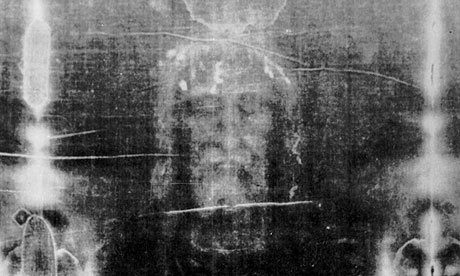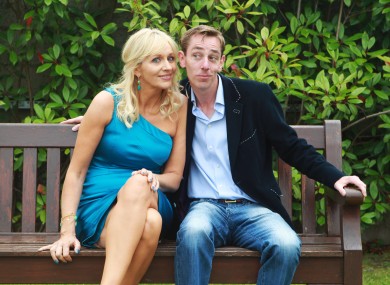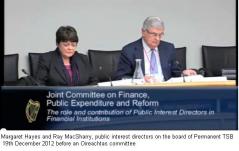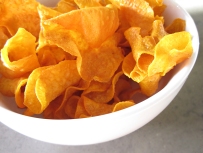New insolvency arrangements for those in financial trouble in Ireland


Under the new Personal Insolvency Service, a number of new arrangements will be available for those in financial trouble, without having to declare themselves bankrupt in a court:
Q Debt relief notice
People with small amounts of debt that does not include a mortgage will be able to apply for a debt relief notice.
They can approach the Money Advice and Budgeting Service (MABS), which will charge €90 for processing an application.
The debt relief notice will apply to consumers who have no income and no assets.
What they owe will need to be under €20,000. To qualify, their net monthly income will need to be less than €60.
In general, they will not be able to live on any more a month than is set out in the Personal Insolvency living standard guidelines.
If the insolvency service is satisfied, then a certificate will be issued.
There will be a one-year period when creditors will be unable to chase the person for money. After a year, the debts will be discharged.
Q Debt Settlement Arrangement
For people who owe more than €20,000 in non-mortgage debt, there will be the option of a debt settlement arrangement.
You go to a personal insolvency practitioner. The PIP will check out your finances.
If the state insolvency service agrees, then a protective certificate will be issued protecting you from your creditors for 30 days.
If the deal is approved by creditors who are owed at least 65pc of the debt, then the arrangement is registered.
If the consumer keeps to the deal, and lives within the expenditure guidelines, their debts will be discharged after five years.
Q Personal Insolvency Arrangement
People who have debts of up to €3m – including mortgage debt, buy-to-let borrowings and other personal debts –may be able to get a deal from their creditors.
They will have to be in a situation where they are unable to ever again be in a position to meet the repayments.
They would approach a personal insolvency practitioner, and honestly outline their financial situation.
Every asset would have to be disclosed and the true extent of their income laid out.
The PIP, regulated by the State, would then work out a plan.
Under the plan, the borrower will have to live according to the income guidelines issued by the Personal Insolvency Service over the period of the agreement.
If the borrower keeps to the deal, they will get a chunk of their debt written off after six to seven years.
Does your favourite chocolate piece give you the spots?


Telling children that they’ll get pimples is one way to encourage them go easy on the chocolate – but is it true?
When it comes to Easter eggs, every child has a favourite strategy.
 Some stash their hoard, tormenting their siblings for months with their untouched rows of chocolate goodies.
Some stash their hoard, tormenting their siblings for months with their untouched rows of chocolate goodies.
Others descend on their eggs like a fox on a bird’s nest, scattering scraps of foil and shards of broken chocolate all over the carpet.
This category of child may well prompt the smug response from nearby grown-ups “You’ll get spots!” At which point, another, even smugger, adult may well respond: “Actually, that’s a myth!”
But is it a myth? It would be more accurate to say that it is a matter of scientific debate.
Multiple factors contribute to the prevalence of acne – the skin disease characterised by spots or pimples – including family history, age and possibly stress levels.
Until the 1960s, the view that chocolate exacerbated the problem was widely held in the scientific community. It was thought that acne sufferers had an impaired tolerance of glucose, the sugar which our bodies convert carbohydrates into for distribution in the bloodstream. Popular textbooks of the 1940s and 1950s counselled against sugary food and drink – including chocolate – as part of acne treatment.
- In Westernised societies, acne affects about 80%-90% of adolescents
- It remains a problem for adults – the mean age of those seeking treatment in the US is 24 years old
- Blackheads and whiteheads occur when pores become blocked with sebum, the skin’s own natural moisturiser
- Sebum-producing glands are sensitive to hormones, which is why teenagers and some pre-menstrual and pregnant women are prone to acne
- If blocked pores become inflamed then they turn into a spots
- Treatments include creams that attack bacteria and in more extreme cases, antibiotics
But a very influential 1969 study by JE Fulton and his colleagues G Plewig and AM Klingman appeared to scotch any association between chocolate and acne.
The researchers took 65 participants with mild-to-moderate acne and divided them into two groups. One group was given a chocolate bar enriched with 10 times the normal amount of cocoa. The other group was given a placebo bar (without the extra cocoa). The groups were told to eat the bars daily for a month.
After a three-week break, the two groups switched bars. The researchers, who examined the patients weekly, decided that chocolate had no effect on acne development.
This study made a big impact, and has been cited dozens of times in other journal articles. But it has recently been roundly criticised.
“This study, to my mind, is invalid,” says Amy Brown, associate professor at the University of Hawaii at Manoa, one of seven signatories to a 2011 letter criticising the Fulton study, printed in the journal Clinics in Dermatology.
“The very first problem is that it was made possible through the Chocolate Manufacturers’ Association of the United States of America – that’s number one,” she says.
She also lists a number of methodological problems. For example, she says the weekly examinations could have missed skin reactions that occurred mid-week. And at the end of the study changes in skin condition were only counted if they were 30% better or worse, so a 29% deterioration in a participant’s acne would not have been noted.
“It was published in the journal of the American Medical Association and everybody just believed it,” says Brown. “People took these researchers’ word for it and that was it.”
There’s a very small amount of literature that’s actually been done assessing the effect of chocolate on acne”
It became scientific orthodoxy that chocolate did not cause or aggravate acne. In 40 years, just one further study looked at the links between the two, and this took in a range of other sweet foods as well.
In 1971 Anderson and his colleagues took 27 university students, divided them into groups and asked them to eat large amounts of chocolate, milk, fizzy drinks and roasted peanuts every day for a week. At the end of the week, no new outbreaks of acne were noted.
The small timescale and sample size of this study – together with the lack of a control group – make it hard to draw firm conclusions.
So in 2011 it seemed to one medical student that the question of chocolate and acne was long overdue a re-examination.
“There’s a very small amount of literature that’s actually been done assessing the effect of chocolate on acne exacerbation,” says Samantha Block of the University of Miami Miller School of Medicine.
As part of pilot study – reported in the Journal of the American Academy of Dermatology – she and her research partners chose 10 male volunteers between the ages of 18 and 35.
The participants chosen all had between one and four non-inflamed spots, to ensure that they were susceptible to acne but not currently suffering from a bad flare-up of the condition. Women were excluded because of the effect that menstruation cycles have on hormone levels, which can affect acne.
Block felt that one weakness of both the Fulton and Anderson studies was that the bars used were not pure chocolate. Since she wasn’t interested in the effect of additives like sugar and sweeteners she used 100%-cocoa chocolate.
Another change distinguished it from the Fulton experiment – one particularly relevant to this time of year.
“We wanted to emulate what people typically consider exacerbating their acne – which is a binge chocolate consumption,” she says.
She made her participants eat varied amounts of chocolate (up to 340g, or 12oz) on day one of the experiment and then assessed their acne on day four and day seven. She found that acne increased on the participants’ faces, in proportion to the amount of chocolate they had eaten.
More recently, Block has repeated the pilot study with a control group and a randomised method, feeding participants with capsules containing either 100% cocoa powder, or gelatine.
Some chocolate bars are high in saturated fat or partially hydrogenated fats – trans fats ”
Different quantities of the two capsules were assigned randomly to 14 participants in what scientists call a “double blind” experiment – neither the participants nor the researchers knew who had been given what until after the experiment.
The study, which Block has presented at a national conference of the American Academy of Dermatology, again showed an increase in acne proportionate to the amount of chocolate eaten.
“It seems to be that for a male subject between the ages of 18 and 35 with a history of acne, chocolate does seem to exacerbate their acne,” Block says.
She hopes that further experiments will test her findings with larger groups of participants, including women. But for now the scientific jury is still out – an article about Block’s work is currently under review for publication in a scientific journal – so it is possibly too soon to allow her results to dictate our behaviour this Easter.
So much for pure chocolate. But what about the chocolate most of us eat – that dodgy stuff that does indeed have additives, including sugar, milk, fruit, nuts and other flavourings?
- Foods with a high Glycemic Load (those which raise blood sugar levels) cause the pancreas to secrete more insulin into the bloodstream to break down sugar
- Too much insulin in the bloodstream encourages a protein (IGF-1) that stimulates cell growth and the availability of hormones such as testosterone, known to promote sebum production
- The insulin also inhibits a separate protein, which normally curbs the actions of IGF-1
- Milk has a disproportionately high GL insulin response and in addition milk contains IGF-1 – the association with acne is stronger in skimmed milk than full-fat milk
A new review paper, published in the Journal of the Academy of Nutrition and Dietetics, examines all the research done on the links between acne and diet in general, not just chocolate.
Its author, Jennifer Burris, is also critical of the Fulton and Anderson studies, and she expresses bafflement over how their results have been misinterpreted by others.
“Although the main outcome of this old research primarily investigated chocolate and acne, it was falsely interpreted to imply diet was not associated with acne,” she says.
She calls it a scientific “myth” which her review paper challenges. Looking at more recent research – not on chocolate, but a range of other foods – she and her fellow researchers conclude that there may be a link between diet and acne, although they don’t know how strong it is.
“We’re not really sure if diet can cause these acne flares or maybe they just make them more severe,” she says.
The researchers are also unsure if the culprits are dairy products or foods that give blood sugar levels a big boost (those with a high “glycemic load”). The role of Omega 3 fatty acids is also unclear.
Burris also doesn’t rule out other pathways through which diet might affect your skin.
“Some chocolate bars are high in saturated fat or partially hydrogenated fats – trans fats – which may increase inflammation, possibly contributing to inflammatory acne,” she says, adding that this theory has not yet been proved.
Of course, the fact that science has not, to date, shown conclusively that chocolate – pure or impure, in bar-form or egg-shaped – causes acne is unlikely to stop adults using the threat of spots to try and slow down their children’s intake.
But be warned – to do this is to open a chocolatey can of worms.
The quick-witted child is sure to respond with a long list of supposed health benefits of eating chocolate, from helping protect the heart, to slimming, to just making us feel good.
Outsourcing home care would create over 260 jobs in the Sligo/Leitrim area
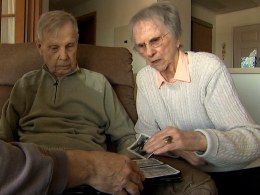

Over 260 jobs could be created in the Sligo/Leitrim area and €2bn saved nationally through reform of the home care sector, according to a new report from Home and Community Care Ireland (HCCI).
The research shows that €117 million per annum could be saved immediately through opening up the tendering of home help and home care services in Ireland.
A further €256 million per annum could be saved if funds are redirected from the Fair Deal Scheme to more appropriate care provision for low and medium dependency older people in their own homes.
The report, The Business Case for the Outsourcing of Home Care Provision and a More Efficient Use of Fair Deal Funds, compiled by EPS Consulting for HCCI, the representative body of private home care providers in Ireland, outlines the need to address inefficiencies in the elder care model as a matter of urgency.
Michael Harty, HCCI Co-Chair, said, “Harnessing the outsourcing opportunity could support the creation of over 260 local jobs in the home care sector in the Sligo/Leitrim area, as more patients will require care and more hours will be able to be delivered within the existing budget.
“These are local jobs that will be in every parish and community across the area, providing employment in many areas experiencing serious unemployment issues.”
“The Government needs to stop paying lip service and take action to address inefficiencies in the system, through a more open and transparent commissioning system which will help save money, create jobs, and stop the cuts to frontline services enabling thousands of people to be cared for in their own home,” he concluded.
Climatologist’s journey from Dalkey Ireland to the Arctic circle

The Arctic is a hub for climate change research, and Dr Gina Henderson, who is originally from Dalkey in Co Dublin, is looking at how snow and ice cover there could be affected by weather patterns as far away as the tropics. Claire O’Connell caught up with the intrepid researcher.
We may have had bitterly cold wind and snow in Ireland this week, but the unseasonal cold snap is nothing compared to conditions in the Arctic. Henderson has just returned from Barrow in northern Alaska, where temperatures plummeted to -30°C as a team built equipment to collect climate data from the polar region. Henderson, who works with the United States Naval Academy, was well wrapped up against the cold, but there were still practical challenges.
“I wasn’t expecting to be as comfortable as I was once in the field,” she says. “But the hardest thing is the wind, if the wind is up it brings a whole new meaning to the word wind chill. And a lot of the time we are working with instruments that require a bit of dexterity, so you have to take off your outer glove, and if you do that even for a minute it’s really hard to warm up afterwards.”
FROM DALKEY ireland TO THE WORLD
So how does a Dalkey native find herself out in the Arctic negotiating chilly glove-related situations?
It all started in University College Dublin, where Henderson completed an undergraduate degree in geography, and her dissertation looked at the climatology of storm tracks, or paths, across the North Atlantic. A keen sailor, Henderson was drawn to the field. “I grew up sailing and racing in Dun Laoghaire harbour, that is the big tie in,” she says.
The next academic port of call was the University of Delaware, where she developed an interest in the relationship between large-scale snow cover and its effects on storm tracks and longer-term winter weather. Her PhD work looked at coupling climate models of the upper layers of the ocean to an atmosphere model, to better predict the impacts of snow.
During a brief spell researching in Rutgers University, she got the opportunity to move to the USNA in Maryland, and again sailing forged the connection. “I had a conversation on a dock after a sailing race in Maryland. I got introduced to someone from USNA, and that eventually resulted in me being offered a position there,” says Henderson, who now teaches oceanography and climatology to classes of ‘midshipmen’. “If you asked me would I end up working at a military academy … it’s not something that is on the radar of the average Irish person, but half of the faculty are civilian here.”
CHANGING TACK TO RESEARCH
While teaching is the main focus in term time, Henderson changes tack in the summer and dedicates months to her climate research, and her sights are set on the Arctic.
“The Arctic is pretty much a hive of activity for climate research right now,” she explains. “It serves as a barometer for climate change, things are changing so rapidly up there. And the Navy is very operationally concerned and interested in how things are changing in the Arctic: as that ocean opens up it’s going to be an environment that the future Navy officers are going to be operating in. They want climate-literate officers, and any sort of predictability or better forecasting skills for the Arctic is big on the research agenda.”
One of Henderson’s lines of work looks at potential links between two climate-related phenomena in different parts of the globe. She and a colleague at USNA are examining the relationship between sea-ice concentration and snow cover in the polar region and the Madden-Julian oscillation, a tropical atmospheric pattern related to rainfall.
Funded by the National Science Foundation, the work analyses datasets and involves “a lot of number crunching,” as Henderson describes. So she jumped at the opportunity this spring to head north for a field trip to the north slope of Alaska with a group of students to build instruments that can detect climate data. “I have been using Arctic data for so long, it was fantastic to get the chance to go and collect it,” she says.
The instruments they deployed include a hydrophone, a microphone that can work in water, which they placed in sea under ice. “We are trying to detect sounds of the ice starting to open up and cracking, and with the acoustic measurement we can hopefully monitor that in a different way, from underneath,” she says. “And we deployed it on a piece of ice that is going to break off and flow, so we can get not only the sound of the ice breaking but also the rate [at which it is moving].”
BIG WORLD TO RESEARCH
Henderson’s research analyses large chunks of the world, and her advice to students with an interest in science, engineering and research is to be enthusiastic and think big about their futures. “Don’t be scared to look far afield,” she says. “There are networks of Irish professionals everywhere.” And, particularly as a woman, she has found support and encouragement from groups in the United States: “I have come across numerous organisations and mentor opportunities that have helped along the way.”
Niall (Bressie) Breslin could be the man to do a Sharon Osborne job for the entertainment industry in Ireland


LET’S TAKE A MOMENT TO REMEMBER TABBY (CALLAGHAN).
Back when Kelly Osbourne’s mother was the most influential woman in showbusiness, Tabby and his band Petronella put Sligo on the rock’n'roll map by finishing third on X Factor.
Before you could say “my real name is Trevor John Callaghan”, Tabby had split from his band and, as a solo artist, was poised to join an elite group of megastars known worldwide by a single name. Bowie, Prince, Madonna, Beyonce… Tabby.
Template
The personable Niall Breslin (aka Bressie) seemed set to follow the Tabby’s template, but the Mullingar star added a unique twist to his career trajectory by adopting the Mrs Osbourne role and becoming a mentor on the Irish version of The Voice, where he plays the edgy, yet sensitive, rocker to confident crooner Cian Egan.
More than ever, Ireland needs a cheery power-pop phenomenon, like The Thrills and The Four Of Us. Bressie could well be the man to do a boy’s job.
This 11-track album is his second solo outing since bravely leaving his old band, The Blizzards. A high-gloss amalgam of melodic pop styles, the company describe it as “uber-cool”. A similar approach didn’t harm Paolo Nutini.
Melancholic
When Bressie’s single Can’t Stay Young Forever went to number one on the airplay charts, the next logical move was to persuade listeners to buy the recordings. So for this offering, Bressie has teamed up with proven hit writer James Walsh, of Starsailor and Bloc Party producer Eliot James.
Show Me Love thumps along like a Gary Glitter album track. The string-drenched I Preferred the Original recalls a melancholic Cutting Crew. Despite the confusing title, the anthemic Silence Is Your Saviour is a song, Bressie explains, that deals with the issues around depression and anxiety.
As a solo performer, Tabby’s shoes were stolen in a club. The management obligingly gave him a pair of old boots that Ronnie Wood once left behind.
The same fate is unlikely to befall Bressie, who can walk tall with this radio-friendly set – even if it’s short on personality.




